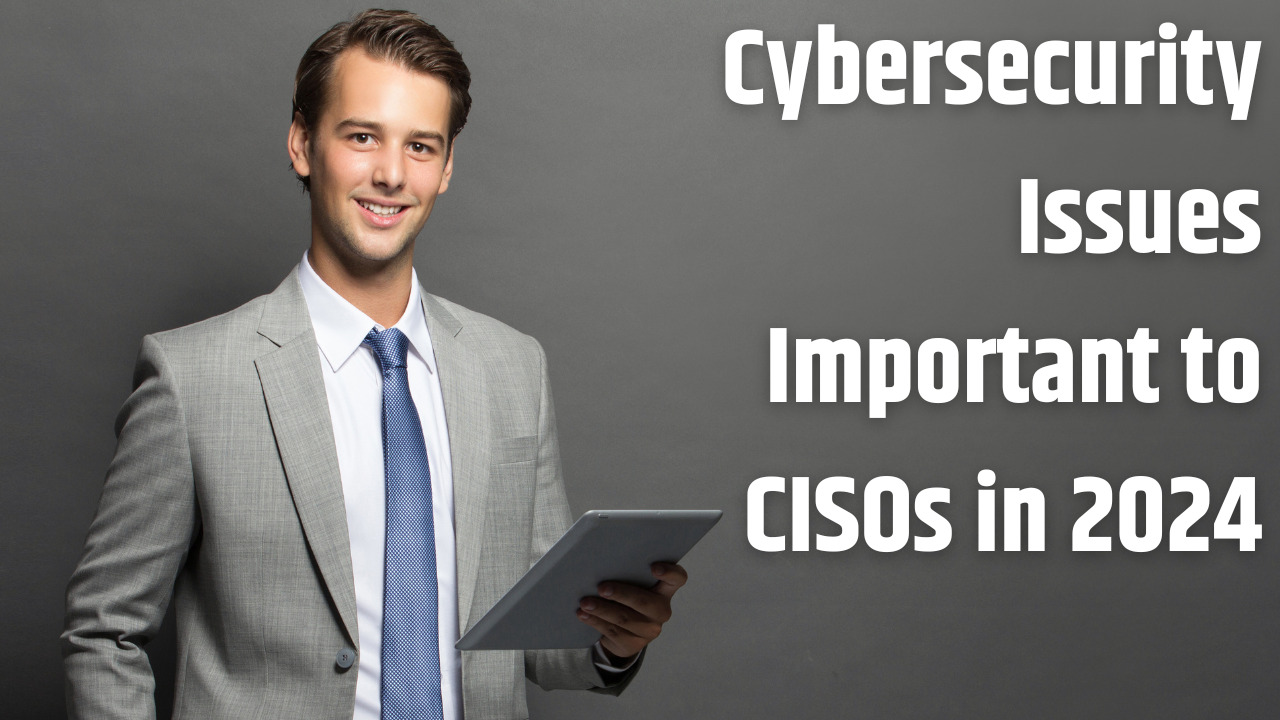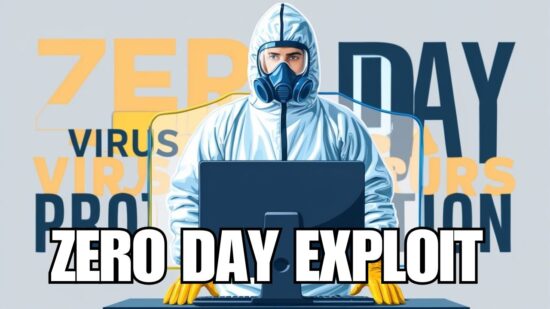What Cybersecurity Issues Are Important to CISOs in 2024: Emerging Threats and Strategic Priorities
In 2024, the role of Chief Information Security Officers (CISOs) continues to be pivotal as they navigate a complex and evolving cybersecurity landscape. With increased digital transformation projects, our organizations face new vulnerabilities that cybercriminals could exploit. We understand the importance of fortifying defenses against sophisticated attack vectors and ensuring that our cybersecurity strategy evolves with these technological advancements.
We recognize that our responsibilities stretch beyond the technical aspects of security. We must stay informed on changing cyber regulations and compliance requirements, emphasizing the need to balance innovation with regulation. As we lead our teams, we are also very aware of the cybersecurity skills gap, working diligently to bridge it through strategic hiring and training programs. Simultaneously, we are persistent in managing the risks associated with third-party vendors and articulating the value of cybersecurity measures to other executives in financial terms that underscore the return on investment for such initiatives.
Key Takeaways
- We maintain continuous vigilance over an expanding digital threat landscape.
- Regulatory compliance requires astute attention to current and forthcoming mandates.
- Proactive skill development and risk management are central to our cyber resilience strategy.
Evolving Threat Landscape
In 2024, we face an increasingly complex cyber threat environment where threats are growing in volume and becoming more sophisticated. CISOs must prioritize their defensive strategies to address specific, high-impact risk areas.
Advanced Persistent Threats
Advanced Persistent Threats (APTs) pose a significant challenge due to their covert and continuous nature. These threats typically involve nation-state or state-sponsored groups aiming to steal data or disrupt operations. We observe a rise in multi-vector attacks that leverage a combination of zero-day vulnerabilities, social engineering, and sophisticated malware. The complexity and longevity of these campaigns require us to invest in comprehensive monitoring and incident response capabilities.
Ransomware Strategies
The strategies employed by ransomware attackers continue to evolve. Attackers are no longer just encrypting data; they are stealing it and threatening to release it unless a ransom is paid. This tactic increases the pressure on organizations to pay ransoms. Our defensive approach includes:
- Proactive Measures:
- Regular backups of critical data
- Segmentation of our network to contain the spread of ransomware
- Reactive Measures:
- Rapid detection and isolation of affected systems
- A prepared and tested incident response plan
Social Engineering Tactics
Social engineering remains a preferred technique for cyber adversaries. Phishing campaigns have become more targeted, with spear-phishing and whaling attacks that aim at high-level executives becoming more common. To mitigate these risks, we focus on:
- Training and Awareness:
- Regular employee training programs to recognize and report suspicious activities
- Simulated social engineering drills to keep staff alert
- Technical Defenses:
- Advanced email filtering technologies
- Multi-factor authentication (MFA) to protect against account compromise
By recognizing and understanding these key aspects of the evolving threat landscape, we can better prepare and protect our organizational assets in 2024.
Regulatory Compliance Challenges
In 2024, we as Chief Information Security Officers (CISOs) are tasked with navigating a web of regulatory complexities that have broad implications for organizational cybersecurity strategy.
Global Privacy Regulations
Countries worldwide have tightened their privacy laws, making compliance a key issue for international operations. Laws such as the European Union’s General Data Protection Regulation (GDPR) mandate strict data protection and privacy standards, requiring our vigilance and adaptability to safeguard personal information. This has pushed us to constantly evaluate and enhance our data handling practices.
Cross-Border Data Transfers
Managing cross-border data transfers is a critical concern due to varying national data sovereignty and movement regulations. The Schrems II decision and subsequent guidelines on transatlantic data transfers have necessitated revisions to our agreements, ensuring that they meet the requirements of both the originating and receiving countries.
Emerging Cybersecurity Laws
We are observing a surge in new cybersecurity laws, from the U.S. SEC regulations to industry-specific directives. These laws often include mandates for incident reporting, cybersecurity frameworks, and board accountability. Staying abreast of these changes is pivotal for our compliance strategies, requiring us to swiftly implement robust processes that can adapt to legislative updates.

Strategic Security Planning
In the rapidly evolving digital world, strategic security planning is vital for our resilience. It requires robust risk assessment, prudent investment, and definitive incident response strategies.
Risk Assessment Frameworks
We employ comprehensive risk assessment frameworks to identify and prioritize system vulnerabilities. These frameworks aid us in developing a thorough understanding of our risk environment, allowing us to allocate resources more effectively to mitigate critical threats.
- Identify: Catalog assets, threats, and vulnerabilities.
- Assess: Assign likelihood and impact levels to identified risks
- Mitigate: Determine action for high-risk areas
- Monitor: Continuously observe risk levels and adapt strategies as necessary
Investment in Cybersecurity
Investing in cybersecurity is non-negotiable and must be proportional to the size and scope of our threats. We ensure investments are made in advanced security technologies and skilled personnel, balancing preventative tools and detection capabilities.
Key Investment Areas:
- Technological Tools: Including AI and machine learning for threat detection
- Human Capital: Training for staff to recognize and respond to threats
- Infrastructure: Secure storage solutions and robust network defenses
Incident Response Planning
Incident response planning is our systematic approach to managing the aftermath of a security breach or cyberattack. Our aim is to limit damage and reduce recovery time and costs, with a clear communication plan in place.
- Preparation: Develop an incident response policy and establish a response team.
- Identification: Detect and ascertain the extent of the incident.
- Containment: Short-term and long-term measures to control the incident.
- Eradication: Remove the threat from the environment.
- Recovery: Restore and return affected systems to normal operations.
- Lessons Learned: Analyze the incident and update policies and defenses accordingly.
Cybersecurity Skill Gap
We recognize that bridging the cybersecurity skill gap is crucial for organizations to effectively defend against ever-evolving threats. We focus on three strategic areas: talent acquisition, staff training, and technological augmentation to ensure robust cybersecurity postures.
Talent Acquisition Strategies
To combat the talent shortage, we prioritize targeted recruitment. We identify must-have skills for roles and seek candidates through diverse channels, ensuring a wider talent pool.
- University Partnerships: Collaborate with educational institutions to access fresh talent.
- Skill-specific Hiring: Target niche skills in cybersecurity for specialized roles.
Staff Training Programs
We invest in continuous education for our teams to keep pace with cyber adversaries. Tailored training programs are essential to fill skill gaps and enhance team capabilities.
- Certifications: Encourage and support staff in obtaining relevant cybersecurity certifications.
- Workshops: Regularly schedule workshops to address emergent cyber threats and defense tactics.
Automation and AI Integration
We leverage automation and AI to streamline routine security tasks. This integration allows our workforce to focus on more complex and strategic security challenges.
- AI-based Threat Detection: Utilize AI to identify and respond to threats swiftly.
- Automated Security Operations: Implement tools that automate security incident responses and policy executions.
Technology Adoption and Integration
In the landscape of cybersecurity, Chief Information Security Officers (CISOs) must navigate an array of challenges associated with new technologies. Our focus here is on the secure adoption and integration of these innovations while mitigating potential risks.
Cloud Security Concerns
With the growing adoption of cloud services, we prioritize the confidentiality, integrity, and availability of data in the cloud. Key strategies include:
- Implementing robust identity and access management (IAM)
- Employing advanced encryption for data-at-rest and in-transit
- Enforcing multi-factor authentication (MFA) to enhance verification processes
Securing IoT Devices
The proliferation of IoT devices introduces numerous points of vulnerability. Our approach to securing these devices incorporates:
- Ensuring devices are regularly updated with the latest firmware
- Segregating IoT devices on separate network zones to limit the attack surface
- Conducting continuous monitoring for anomalous activities
Blockchain for Security
Leveraging blockchain technology, we aim to bolster our security posture. Here’s how:
- Utilizing decentralized ledgers for tamper-evident logging and auditing trails
- Applying smart contracts for automated and secure transactions
- Integrating blockchain to enhance identity verification processes
Third-Party Risk Management
Third-party risk management is an increasingly critical cybersecurity focus as we head into 2024. We know that security is not a solo practice but extends to every vendor and partner in our network.
Vendor Security Assessment
We understand the importance of conducting thorough security assessments of our vendors. These assessments help ensure that vendors adhere to our cybersecurity standards and policies. We typically:
- Evaluate vendors’ security policies and procedures.
- Inspect their data handling and storage practices.
- Verify compliance with relevant cybersecurity regulations.
Key steps in a vendor security assessment include:
- Document Collection: Gathering all relevant security documents from the vendor.
- Security Questionnaire: Have the vendor complete a detailed security questionnaire.
- On-site Audit: If necessary, conduct an on-site audit to assess physical security measures.
Supply Chain Vulnerabilities
We recognize that supply chain vulnerabilities can have far-reaching consequences. Our approach to managing these risks includes:
- Identifying and mapping the supply chain to uncover potential weak links.
- Establishing strong contractual agreements that enforce security requirements.
- Continuously monitoring for new vulnerabilities that may affect our supply chain.
We prioritize the following actions:
- Regularly Updating Software: Ensuring that all parties in the supply chain keep their software updated to mitigate risks from known vulnerabilities.
- Multi-Factor Authentication (MFA): Mandating MFA to safeguard access points within the supply chain network.
Security Metrics and Reporting
In our approach to cybersecurity, we emphasize the importance of judicious metric selection and effective reporting strategies. These components are crucial for measuring the impact of security measures and communicating their value to stakeholders clearly and accurately.
Key Performance Indicators
We understand that not all metrics are created equal. Focusing on the pertinent ones aids in efficiently allocating resources and strategizing defenses. A table of paramount Key Performance Indicators (KPIs) that we monitor includes:
| KPI | Description | Rationale |
|---|---|---|
| Number of Intrusion Attempts | Tracks unauthorized access attempts | Reflects threat landscape and perimeter strength |
| Mean Time to Detect (MTTD) | Average time to identify breaches | Measures detection capabilities |
| Incident Response Time | Time taken to respond to incidents | Indicates readiness and operational agility |
| Compliance with Regulations | Adherence to evolving cyber laws | Ensures legal and industry-standard conformity |
It’s essential to regularly review and adapt these KPIs to align with the evolving cyber threat environment and organizational objectives.
Board Communication
Communicating effectively with the board is a key aspect of our official duties. We ensure that the information is:
- Relevant: We tailor our reports to include metrics that align with the company’s strategic goals and risk profile.
- Understandable: We translate technical data into business insights, making it accessible to all board members, regardless of their expertise.
For instance, conveying the Return on Investment (ROI) of cybersecurity spending using metrics like the cost of incident response versus prevented losses, highlights the direct business value of robust security practices. This strategic communication fosters informed decision-making and secures necessary support from the highest levels of management.
Cyber Insurance and Financial Implications
In 2024, cyber insurance has become integral to our strategy for mitigating financial risks associated with cybersecurity breaches. We’ll explore the nuances of coverage options and share how we can effectively manage the costs tied to these policies.
Coverage Scope
Cyber insurance policies vary widely, and we must assess the scope of coverage against prevalent risks. We prioritize policies that cover first-party and third-party losses—including but not limited to data breach response, ransomware demands, and business interruption. We also seek coverage for costs associated with legal defense should a cyber incident lead to litigation.
Cost Management
Proactively managing the costs of cyber insurance involves a few key strategies. First, we focus on risk assessment and mitigation; we can often negotiate lower premiums by demonstrating strong security measures. We must thoroughly compare insurance providers to find the most cost-effective solution. Here’s a condensed view of our approach:
- Evaluate the Risk: Understand and quantify the potential cyber threats.
- Enhance Security: Implement robust cybersecurity protocols.
- Compare Offers: Look for the best coverage at competitive rates.
- Bundle Policies: Explore options to combine cyber insurance with existing coverage for cost savings.
By meticulously weighing coverage against potential threats and costs, we cement our financial fortitude against the dynamic landscape of cyber risks.
Emerging Technologies and Future Threats
In our ongoing commitment to cybersecurity, we observe and prepare for the risks presented by emerging technologies. Our current focus highlights the security implications of quantum computing and the deployment of 5G networks.
Quantum Computing Risks
Quantum computing presents both substantial opportunities and significant challenges for cybersecurity. Our collective defense mechanisms based on encryption standards might not withstand quantum attacks. Considering this, post-quantum cryptography is on our radar, as it is essential to prepare for a future where quantum algorithms could potentially crack traditional encryption. We closely monitor developments in this field to update our security protocols accordingly.
5G Network Challenges
With the advent of 5G technology, we’re witnessing increased speeds, connectivity, and an expanded attack surface. The reliance on more software and virtualization comes with vulnerabilities, particularly as 5G facilitates more connected devices in the Internet of Things (IoT). To mitigate these risks, we prioritize:
- Enhanced authentication measures to secure an ever-growing number of endpoints.
- Segmentation to contain breaches and prevent lateral movement within the network.
We understand the complexity these new technologies introduce, and we’re committed to addressing these challenges head-on to protect our digital infrastructure.
Organizational Culture and Cybersecurity
In tackling cybersecurity, we must acknowledge that technology alone isn’t enough. The synergy between our employees and our cyber defense mechanisms creates a resilient organization.
Executive Buy-In
Strong Leadership Commitment: Without the unwavering support from our executives, cybersecurity strategies can fall short. Our leaders allocate the necessary resources and set the tone for a security-first mindset across the organization.
- Alignment with Business Goals: We ensure that our cybersecurity efforts align with our overall business objectives, fostering support from all levels of leadership.
- Visible Endorsement: Regular communication from our executives about cybersecurity reinforces its priority throughout the company.
Employee Awareness
Creating a Culture of Security: Every organization member safeguards our digital assets. It’s our ongoing mission to keep everyone informed and vigilant.
- Training Programs: We implement comprehensive training to ensure all employees understand their role in cybersecurity.
- Behavioral Change: We encourage secure habits through continuous awareness campaigns and incentives for secure behavior.
Crisis Management and PR
In 2024, we recognize that effectively managing a cyber crisis and the subsequent public relations (PR) challenges is crucial for maintaining stakeholder trust and our organization’s reputation.
Handling Public Breaches
When a breach occurs, immediate and transparent communication is essential. We follow a structured protocol that involves:
- Acknowledging the incident promptly.
- Providing factual details as they become available.
- Outlining the steps we’re taking to remediate.
This approach ensures that accurate information is relayed to the public, preventing misinformation and potentially limiting reputational damage.
Stakeholder Reassurance
To reassure stakeholders, we focus on clear and ongoing communication. Our strategy includes:
- Regular Updates: Schedule and stick to regular updates regarding the incident.
- Actionable Steps: Detail the preventative measures being implemented to mitigate future risks.
Our communication aims to reinforce the proactive measures we’re taking to safeguard stakeholders’ interests and uphold the integrity of our cybersecurity posture.
Data Security and Privacy
In the landscape of 2024, we see an increasing focus on the meticulous handling of sensitive information. With cyber threats evolving, protecting data and ensuring privacy are paramount in our strategy.
Biometric Data Protection
Biometric data has become integral to our security infrastructure. However, protecting this data is crucial, as its compromise could significantly breach personal security. We’re implementing enhanced encryption methods and access controls to safeguard this information.
- Implementing Advanced Encryption Standard (AES) for data at rest
- Using Multi-factor authentication (MFA) to authorize access to biometric data
Customer Data Handling
Our customers’ data is a treasure trove that requires careful handling and staunch privacy measures. We’ve refined our data management approaches to ensure compliance with global regulations such as GDPR and CCPA.
- Upholding Data Minimization: Collecting only what’s necessary.
- Ensuring Transparency: Keeping customers informed about their data usage
We utilize Data Loss Prevention (DLP) tools and regular privacy audits to maintain our standards for customer data handling.






